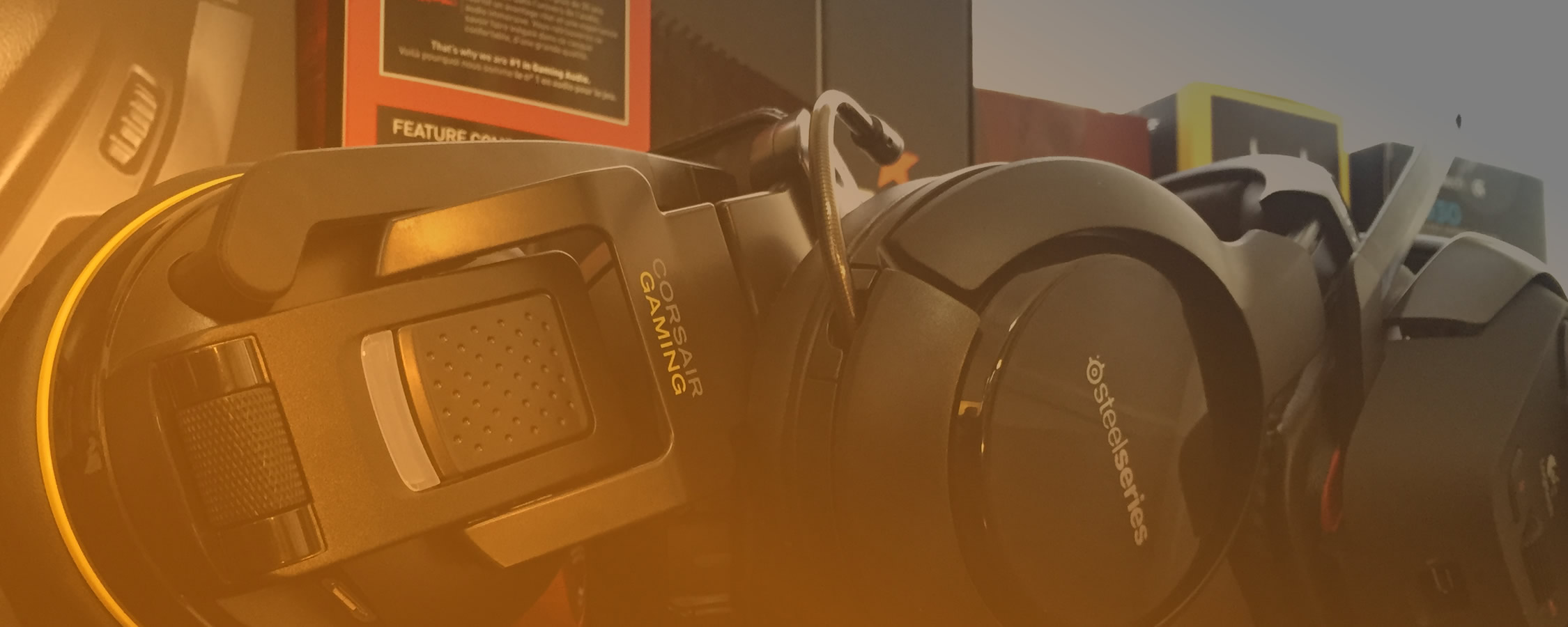Turtle Beach Z300
score
The Turtle Beach Z300 touts dual-band wireless, great battery life and includes Bluetooth but the device is deeply flawed by mediocre sound, poor wireless range, uneven microphone input and indiscrete buttons.
Comfort
I didn't find the Z300 unbearable for multi-hour gaming sessions, but my ears did touch the speaker grills inside the ear cups making these the shallowest here. This could be a problem for those with more pronounced ears. The cushions are made of a cloth material, cooler than pleather and even the dense felt pads found on the A50. The band was just big enough for my head, but if you have a giant skull or are astonishingly tall, you may find the fit less comfortable. There's a generous amount of padding at the top.
Sound
The overall audio profile is similar to the i60. The audio is superior to the G930 and H2100 in detail and clarity but severely lacking low end. Notably, there are 4 EQ presets selectable on the headset. Even with "Bass boost" enabled, which Turtle Beach claims is "for the extreme low frequencies," the bass output was anemic.
A deal breaker for me on the Z300 was its "fading in" of audio during silent moments. What would happen is during a silent scene in a game, movie etc... if there was a sudden gunshot or quick utterance, that noise would be faded in from quiet to full volume. It only took a brief instant, but it was enough to annoy. I thought maybe this was a DRC artifact (dynamic range compression) but toggling it off/on did not have an effect. I don't think this is a desirable feature for most situations.
Wireless
Turtle Beach advertises "interference free" dual-band wireless for the Z300. It also has a separate Bluetooth radio for devices other than computers. While generating as much traffic across both bands as possible, the connection remained solid.
I don't know this, but if the Z300 and i60 use the same proprietary RF technology, I would not be surprised. Like the i60, the Z300's poor wireless range will keep you in the same room as the transmitter. Both of these headsets had the shortest range by far. The Z300 and i60 were the only headsets which could not be used reliably in an adjacent room. They began breaking up the moment I exited the door and turned the corner. Even Bluetooth, which is not as robust as most of the proprietary solutions here, fared better at distance. Latency from mic to ear tied with the H2100, besting the G930 and i60 but falling short of the instantaneity brought by Astro and SteelSeries.
Microphone
The Z300 has a quirky microphone. I tried playing with options but the volume was often uneven and not particularly clear compared to its competition. On the plus side, indoor wind noise wasn't an issue, probably thanks to its thick foam cover. There's also a mic monitoring dial on the headset for adjusting how loudly you hear yourself. All of the headsets here have a mic monitoring feature, but some cannot be adjusted (e.g. Astro and SteelSeries).
The detachable microphone boom is a curious feature. The boom is extremely flexible, so bending it out of the way isn't hard. The big rotating arm where the mic plugs in is non-removable so the fact this is a headset remains visually obvious even when the mic is removed. Presumably, this feature makes replacing a broken mic as easy as ordering a new one though, so that's the real value here as far as I can tell.
Features and Value
Essentially all of the features available on the Z300 are available from the headset itself. There are 4 EQ presets, a toggle for DRC (dynamic range compression), master and mic monitor volume, mic mute button, a detachable mic and a 2.5mm cable for non-Bluetooth mobile phones or consoles. The left ear cup mostly hosts the effects and volume controls while the right cup is primarily for Bluetooth controls. The bad thing about these buttons was finding them with my fingers – they are all flat and flush with the body. For example, I found myself hitting the Bluetooth button instead of the mic mute many times. There are no transmitter features as it's merely a dongle, but Turtle Beach included a stand so that you may place it wherever you'd like.
Battery Life
The Z300 lasted over 13 hours in the synthetic test, nearly matching the 15-hour claim made by Turtle Beach. The only headset with superior battery life was the SteelSeries H Wireless which also comes with a spare battery pack. If you ever forget to charge up though, the Z300 can be used and charged simultaneously via a micro USB cable.
Overall Quality and Impressions
Like the i60, the Z300 shipped in a very nice box with a magnetic flap. The perceivable build quality is solid and feels like it will last. There are nice little touches like the red stitching found throughout the fabric and the metallic Turtle Beach logo adorning the microphone. It doesn't all seem well-conceived however, given the weird semi-detachable microphone design and the perfectly smooth buttons that make it hard to determine which one you're pressing. Also like the i60, a perky female voice giving you a word-by-word reading of each feature you enable, disable or pass by. The hammy and unnatural delivery of those lines are even more absurd and silly than that of the i60. Simple tones or beeps are preferable here, but this cannot be changed.




